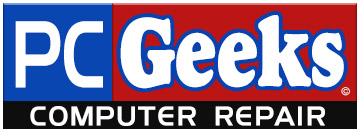10 Tips for Keeping Your PC Cool
Summer is the ideal time to review whether all your PCs are receiving the airflow and proper cooling they require. Doing so will greatly reduce one’s chances of experiencing failure in any number of the heat-sensitive components that comprise a PC.

1. Hibernate When Not in Use
Adjust the setting so a PC will go directly into hibernate mode when it’s not in use. It will give it an opportunity to cool down and will save electricity as well.
2. Keep Internal Cables Short
Long internal cabling takes up more space and reduces internal air flow. This increases the chance of other internal components getting too hot and failing.
3. Dust Regularly
Dust can clog the air intake grill on a PC, thus increasing the likelihood of overheating internal components. Dust regularly and perform an occasional “look-see” to determine if a PC’s air intake grill is receiving the air it needs.
4. Spot Check Fans
While checking for dust, also make sure a PC’s fan(s) are working as well. A burned-out power supply fan can quickly lead to overheating and equipment failure.
5. Consider Using Additional Fans
Some PCs have more than one hard drive which means they tend to run hot. If this is the case, consider whether there is space for installing an additional fan.
6. Check BIOS Temp Settings
Newer PCs often have BIOS temperature settings which can be configured to shut the PC down if a certain temperature has been reached.
7. Provide Plenty of Space for Operation
Some cabinets and desks are not necessarily designed with heat-sensitive equipment in mind. In addition, many users tend to clutter up their desks with papers, office supplies, etc. Be sure that your PC consistently has plenty of air flow below, around, and above it.
8. Use Cable Guards
Some PC cases have their own cable channels to ensure they remain in a discrete place. If your model doesn’t, purchase some cable guards to ensure that the cabling won’t block air flow to the computer case.
9. Go Solid State
Consider replacing traditional hard drives with solid-state drives. Solid-state drives do not contain moving parts. This allows them to operate without generating as much heat as traditional drives.
10. Alternative Cooling Products
For challenging situations consider using any of the following
- Liquid cooling.
- Memory heatsinks.
- Hard drive coolers.
- A cooling unit in an empty drive bay.
Want to know more about keeping your computer equipment in top-notch shape? Contact us at PC Geeks today!
